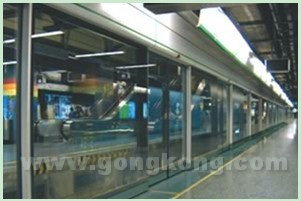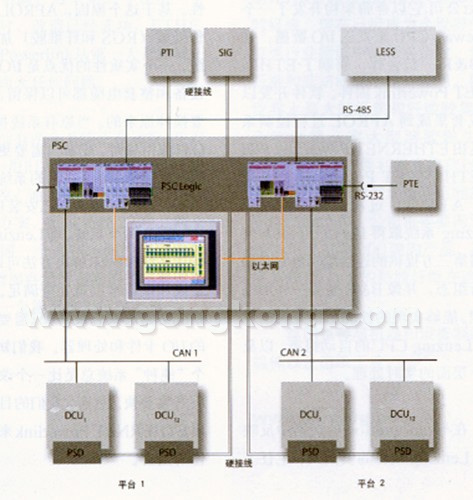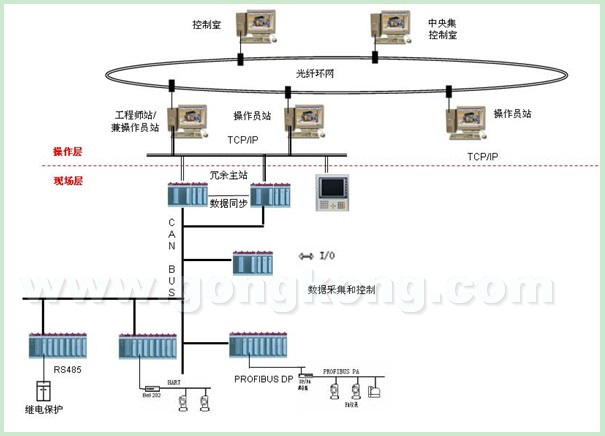In our daily life, we often have to cross the subway screen door. For the most part, we only notice the situation when they are not working. The Swiss subway screen door manufacturer Kabbah Gilgen and the Becher process control automation experts have given this issue special attention, making the huge flow of people in Hong Kong and Taiwan Kaohsiung underground railway no longer go back. The flexible automation provided by B&R also plays an important role. More and more subway stations are separated from the track system by subway screen doors. This increases safety and comfort, as well as a significant amount of energy, especially for areas that require cooling of the subway system due to high temperatures. This is the case in Hong Kong and Kaohsiung, Taiwan. Every day, when the train arrives, the door will automatically open, and the door will automatically close before the departure. If one of these doors fails, this will greatly affect the safety of the passengers and also affect the operation of the subway system. Kabbah Gilgen of Schwamburg, Switzerland, is commissioned by the owner and operator of the subway system to provide a safety gate system to improve operational safety. For example, in Hong Kong, there are 74 stations, each with 40 doors, and it will soon be clear that with careful maintenance and diagnostics, it will ensure its functionality over a 35-year working life. From this we made the decision that each door was networked and carefully monitored. The Belcher Process Control Company in Belgium is a partner in this task, and B&R's automation products are the ideal technical basis. Multi-layer network structure Each door has a door control unit (DCU) that controls the motor and closing mechanism based on the received commands. These units ensure that the strength and speed of the door remain optimal within a safe range. They also monitor the status of sensors and actuators on the door and continuously transmit data to the station isolation gate controller (PSC). Each door on the platform is controlled and monitored by PSC and B&R 2003. The DCU PCC is networked via the CAN bus with a transmission speed of 100kBit/s, which is sufficient for timing requirements, and the CAN bus can also be transmitted at the same rate over a range of up to 180 meters. The PSC is the central unit that collects data from the gate and transmits it to the station management system (SMS). Central display system In Hong Kong, during the three-month work cycle, service personnel use portable test equipment (PTE) to check and download data from the door. For the new installation in Taiwan, a B&R PP120 central display system and an operator terminal with a 10.4′′ display are used in each control room for on-site monitoring by operators and maintenance personnel. The subway screen door experts at Kaba Gilgen determined that there are up to 104 different event information per door. Each station has at most 48 doors and 120 additional system information, so there may be more than 5,000 pieces of information that must be collected centrally, triggering different actions, and must be displayed visually and clearly. Typical examples of such events include door jams, motor overheating, or fence inflexibility. It can also detect more complex environments. Controller that communicates with each other In addition to the CAN controller's door controller connection, the PSC communicates with the local environmental monitoring system (LESS) via RS485, communicates with the PTE via RS232, communicates with the display via Ethernet, passes the binary signal and the positive sequence car identifier (PTI) ) Communication. The communication flexibility provided by B&R 2003 satisfies these network requirements without problems. The CP476 CPU handles all door controllers, switching I/O and network connections. “The communication options and compact design of the B&R system make it easy for us to make choices,†said Felix Ross, project manager at Burcher Process Control. “B&R's Automation Studio also offers the best. The programming environment.†Bercher Process Control developed the system in C because it is expected that technicians will use the programming language in the next few years. This is a basic requirement for the long working life of the system. †Safe programming The technical specifications of programming are very strict. Dynamic data structures are not allowed for security reasons. In addition, rigorous system structured development based on V models and GMP specifications is also used to ensure the quality of the project. “For this project, coherent documentation requires more effort than actual programming.†Rose further explained, “The ongoing review with Kabir Gilgen and end customers helped us avoid mistakes from the start and ensured throughout The success of the life cycle." On the B&R Power Panel series PP120 display system in the central control room, important information about the door and its functions has been displayed. The action of the door is displayed as soon as it occurs. And the incident report is transmitted to the Local Environmental Monitoring System (LESS) for further analysis. The active modification of the system is password protected. Visualization of system status and easy navigation during development are also a priority. Integrated tool Based on Microsoft Excel, Bercher Process Control developed its own tools to complete project configuration, operation and display units. These tools measure the requirements of the configuration and I/O systems and communicate with other departments. B&R Automation Studio has developed import/export capabilities that support the integration of these tools and ensure seamless integration of projects across multiple departments. With Visual Components, Bercher Process Control simplifies programming of the operator interface. As part of Automation Studio, you can easily perform operations and display settings on your PC using drag-and-drop technology. With the high value-added automation components provided by B&R, the Bercher Process Control Company has the confidence to complete the project commissioning. The system in Taiwan will be installed the following year. I/O slave extension - redundancy scheme The following figure shows the system network topology diagram with redundant controllers, using open, standard Ethernet, CAN protocol. In this system, two redundant primary stations, below are 5 IO stations, up to 8 IO stations. The communication between the I/O station and the master station is implemented by the I/O Bus. The system supports dual Ethernet and dual I/O Bus, and the I/O Bus is specifically implemented by CAN Bus. Supporting various communication methods such as ProfiBus, ModBus, CANBus, etc. on the I/O station, it is convenient to extend the third-party equipment. 64V Battery Pack ,Lithium Battery Box,Lithium Power Pack,Jackery Battery Pack Zhejiang Casnovo Materials Co., Ltd. , https://www.casnovonewenergy.com


Door check controller structure 
Network topology